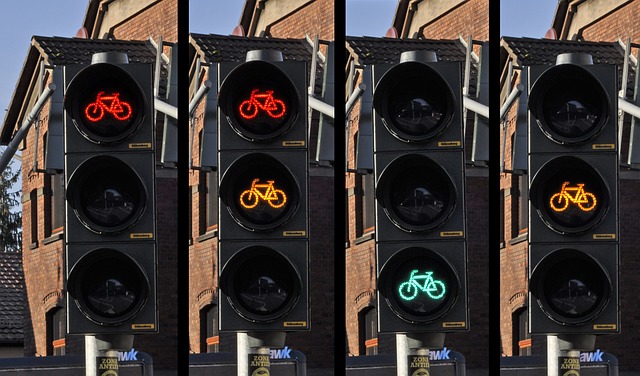Traffic signals, those dynamic beacons of order amidst urban chaos, play an important role in ensuring the safety and efficiency of vehicular and pedestrian movement. These seemingly simple devices, with their red, yellow and green lights, have a profound effect on traffic flow and the overall functionality of modern cities. In this article, we examine the history, function and importance of traffic signals in today’s bustling urban landscape.
Evolution of Traffic Signal:
The evolution of traffic signals is an interesting journey that mirrors the development of transportation systems and urban planning. The first primitive traffic control systems date back to ancient civilizations when flags, lanterns, and semaphore signals were used to regulate horse-drawn carriages and pedestrians. However, it was not until the advent of the automobile that the need for standardized and effective traffic control became apparent. If you don’t know how to drive, you can also hire 15 passenger van rental for your road trip without having any driving issues.
The first modern electric traffic signal goes to Lester Wire who introduced it in 1912 in Salt Lake City, Utah. This early version had only red and green lights and lacked the amber warning light we are now used to. Over the years, there have been a number of developments in traffic signals, including the addition of pedestrian signals and the introduction of automatic timing mechanisms. Today, modern traffic signals are often integrated with sophisticated sensors and control systems that adapt to real-time traffic conditions.
How Traffic Signals Work:
At the heart of every traffic signal is a complex mechanism designed to ensure the safe and efficient movement of vehicles and pedestrians. The standard traffic signal cycle consists of three phases: green, yellow and red. Here’s how each step works:

Flashing Green:
During the green phase, traffic is allowed to move in the direction indicated by the green light. Sensors embedded in the road or connected to signals detect the presence of a vehicle and adjust the duration of the green phase based on traffic flow. It helps improve traffic movement and reduce congestion.
Flashing Yellow:
The flashing yellow phase serves as a warning that the green phase is about to end. This phase allows vehicles already in the intersection to clear it safely. yellow road signs durations are carefully calibrated to give drivers enough time to react and slow down.
Flashing Red:
A red phase stops traffic in a particular direction, allowing vehicles coming from other directions to proceed. This cycle maintains order and prevents collisions. Additionally, many modern traffic signals are equipped with red light cameras to prevent red light violations.
Pedestrian Signals:
Pedestrian signals run alongside vehicle signals, allowing pedestrians to cross the traffic safely. Pedestrian stages are often integrated with vehicular stages to ensure smooth interaction between different modes of transport.
Importance in Urban Mobility:
Traffic signals are essential to maintain law and order on the roads. They facilitate the smooth flow of traffic by preventing conflicting movements at intersections. Without traffic signals, chaos would ensue, leading to accidents, congestion, and inefficient use of road space.
Traffic lights play an important role in promoting pedestrian safety. The inclusion of dedicated pedestrian steps ensures that pedestrians have time to cross roads, reducing the risk of accidents and increasing the overall walkability of cities.
Challenges and Future Developments:
As cities continue to grow and traffic becomes increasingly complex, traffic management systems face new challenges. A key challenge is the integration of emerging technologies such as autonomous vehicles. Traffic signals will need to communicate with these vehicles to improve traffic flow and ensure safe interaction.
Additionally, efforts are being made to increase the environmental sustainability of traffic signals. Many areas are switching to energy-efficient LED lights, which use less electricity and have a longer lifespan than traditional incandescent bulbs.
Conclusion:
In the tapestry of urban infrastructure, traffic signals stand as important threads that weave order and safety into the complex fabric of city life. Their evolution from simple hand-held devices to technologically advanced systems reflects the development of human mobility. As cities continue to evolve, so do traffic lights, adapting to new technologies and challenges, ensuring that the daily commute remains as orderly and safe as possible. Contact us for more information.

